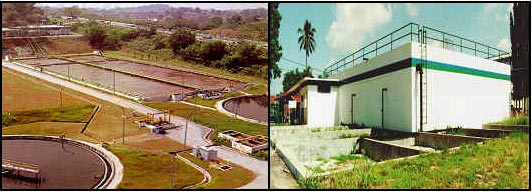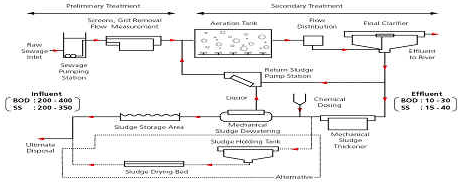-
 Sewerage Facts
Sewage • Sewage Characteristics • Sewage Treatment Objectives • Sewage Treatment Methods • Sewage Treatment System • The Evolution Of Sewage Treatment Sewage Treatment Plant • Package Plants • Combined Process • Imhoff Tanks • Oxidation Pond Effluent Standards Individual Septic Tanks Population Equivalents Water Cycle Confined Space Ammonia Green Technology Lighter Side
Sewerage Facts
Sewage • Sewage Characteristics • Sewage Treatment Objectives • Sewage Treatment Methods • Sewage Treatment System • The Evolution Of Sewage Treatment Sewage Treatment Plant • Package Plants • Combined Process • Imhoff Tanks • Oxidation Pond Effluent Standards Individual Septic Tanks Population Equivalents Water Cycle Confined Space Ammonia Green Technology Lighter Side - Technical Resources Center
-
 INDAH WATER RESEARCH CENTRE
INDAH WATER RESEARCH CENTRE
Package Plants | Aerated Lagoons | Extended Aeration Systems | Oxidation Ditch | Rotating Biological Contractors | High Rate Trickling Filter
Extended Aeration Systems


To breakdown the organic material in sewage, bacteria require oxygen. This may be introduced by agitation (using surface aerators) or by submerged "diffusers".
As the name implies FBDAEA systems introduce air in the form of fine bubbles through submerged diffusers. Fine bubbles promote higher oxygen transfer efficiency and are therefore used in preference to coarse bubbles.
Sewage entering a plant in passed through primary treatment where coarse material and grit is removed. The sewage then passes to secondary treatment in the form of any aeration tank where it is injected with fine bubbles of air from submerged diffusers.
Solids in the sewage are held in suspension by the bubbles and bacteria in the sewage break down organic materials. Sewage is held in the aeration tank between 18-24 hours.
The effluent with suspended material is then passed into a "clarifier" (sedimentation tank) where the material settles as a sludge. The sludge is drawn off with some being returned to the aeration tank to ensure enough bacteria are present in the tank to continue the process of breaking down newly introduced sewage.
The effluent is then polished and/or discharged to the receiving environment.
Typical values for FBDAEA plants are as follows:
| (mg/L) | Raw Sewage | Effluent | DOE Standard B |
|---|---|---|---|
| Biological Oxygen Demand | 200-400 | 10-30 | 50 |
| Suspended Solids | 200-350 | 15-40 | 100 |
FBDAEA systems can consistently produce a high quantity effluent. By monitoring the influent and effluent, the activity in the aeration tank can be adjusted to cater for variations in hydraulic or organic load. These plants only require moderate areas of land.
There are currently approximately 60 extended aeration systems in Malaysia and this is expected to significantly increase to some 200 plants as older systems are phased out.
LATEST HEADLINES
- CUSTOMER : Please CLICK HERE to see how we handle your personal data
- Click CUSTOMER tab for more info on charges, services, check your account balance & statement of account request
- Click DEVELOPER tab for certifying agency offices, check submission status & get sewerage work-related forms
- Click CONTRACTOR tab for contractor & supplier online registration and IWK Technical Training Centre
- Your feedback is important to us. Please do not hesitate to contact us with your constructive comments.


